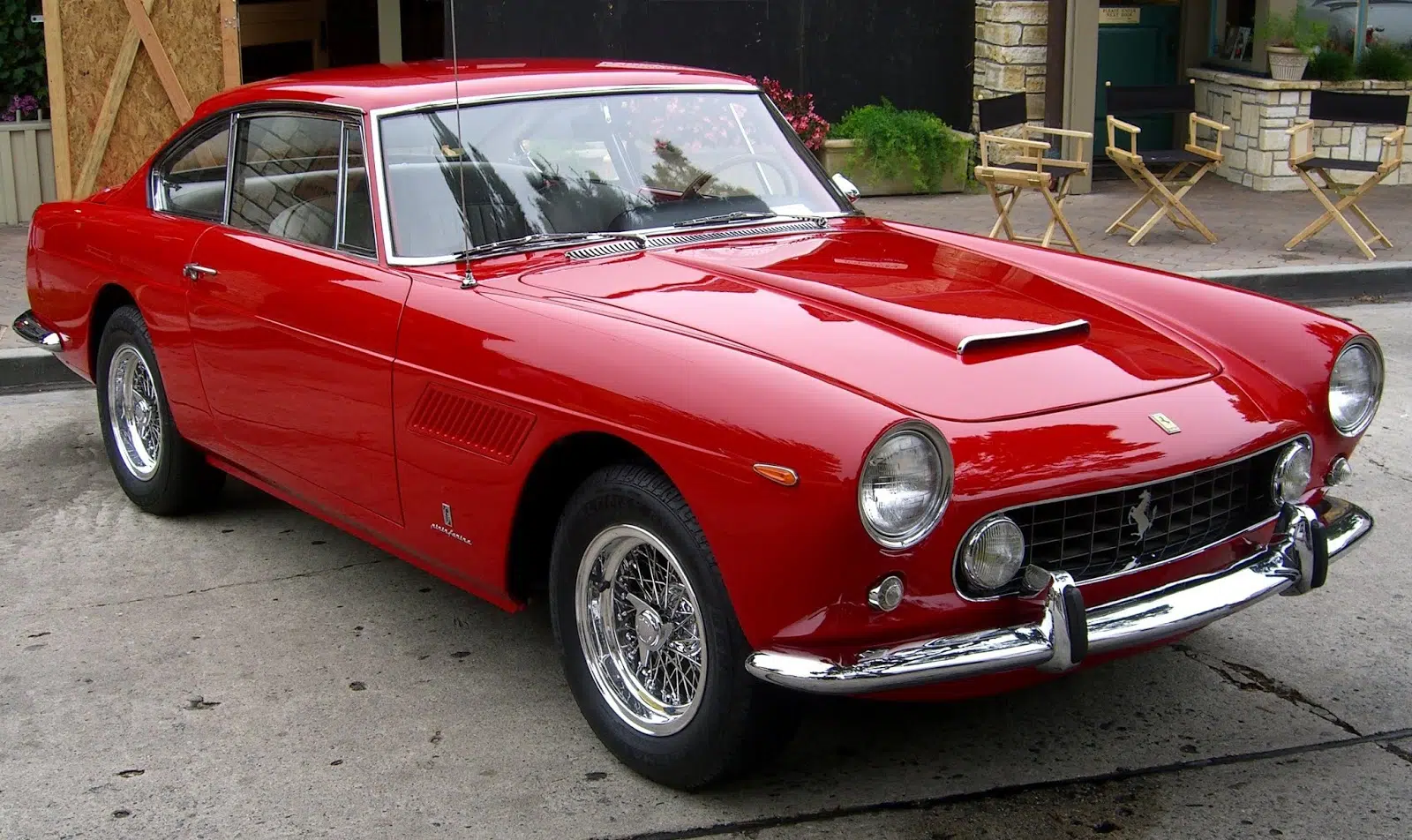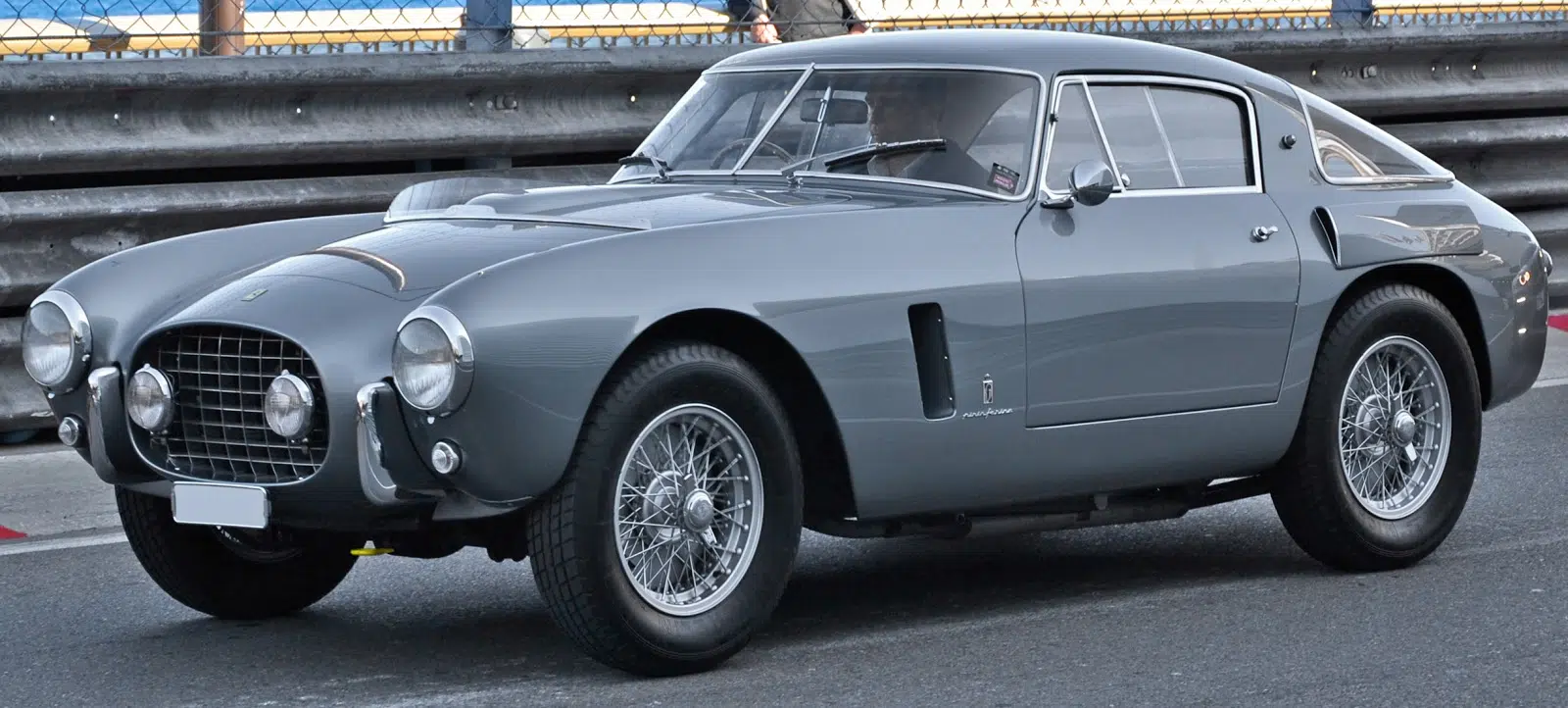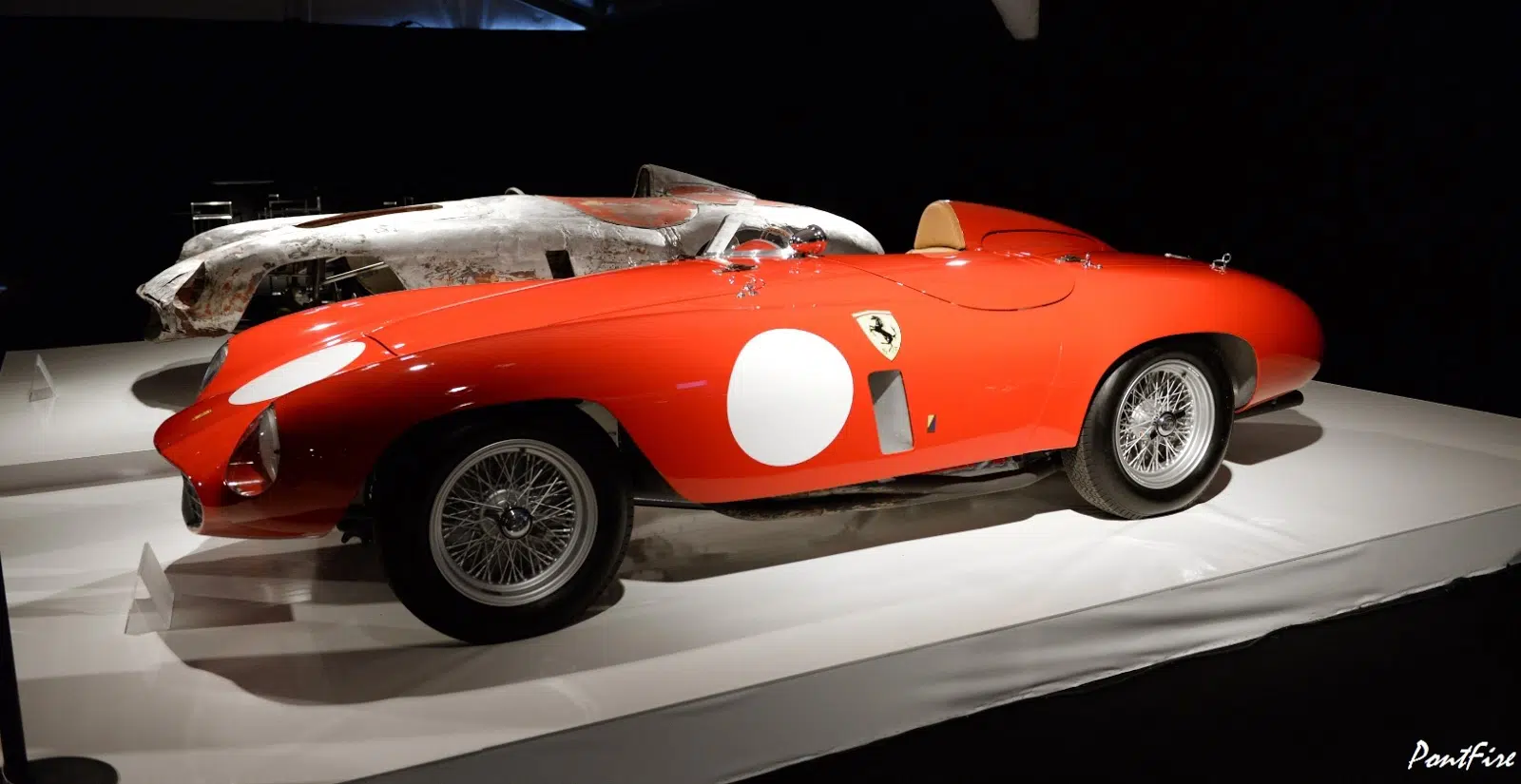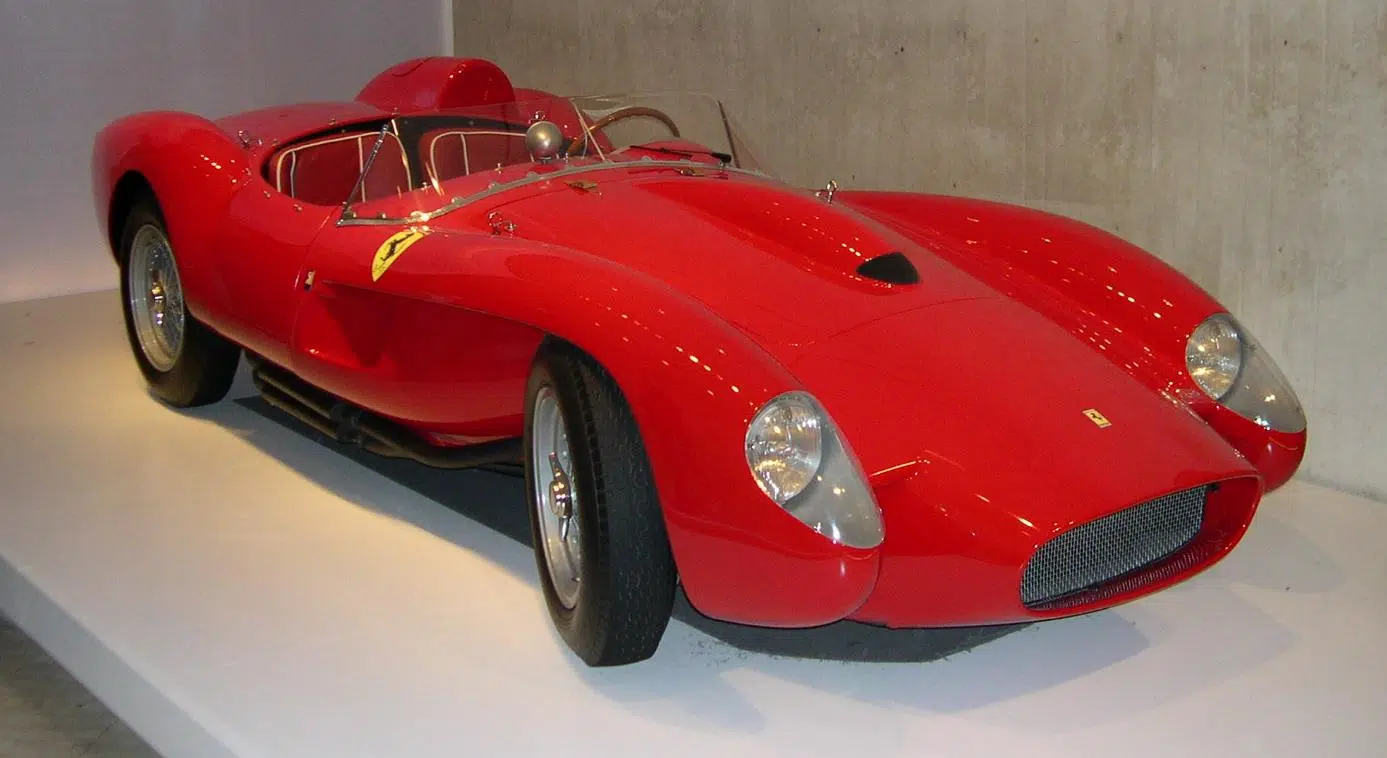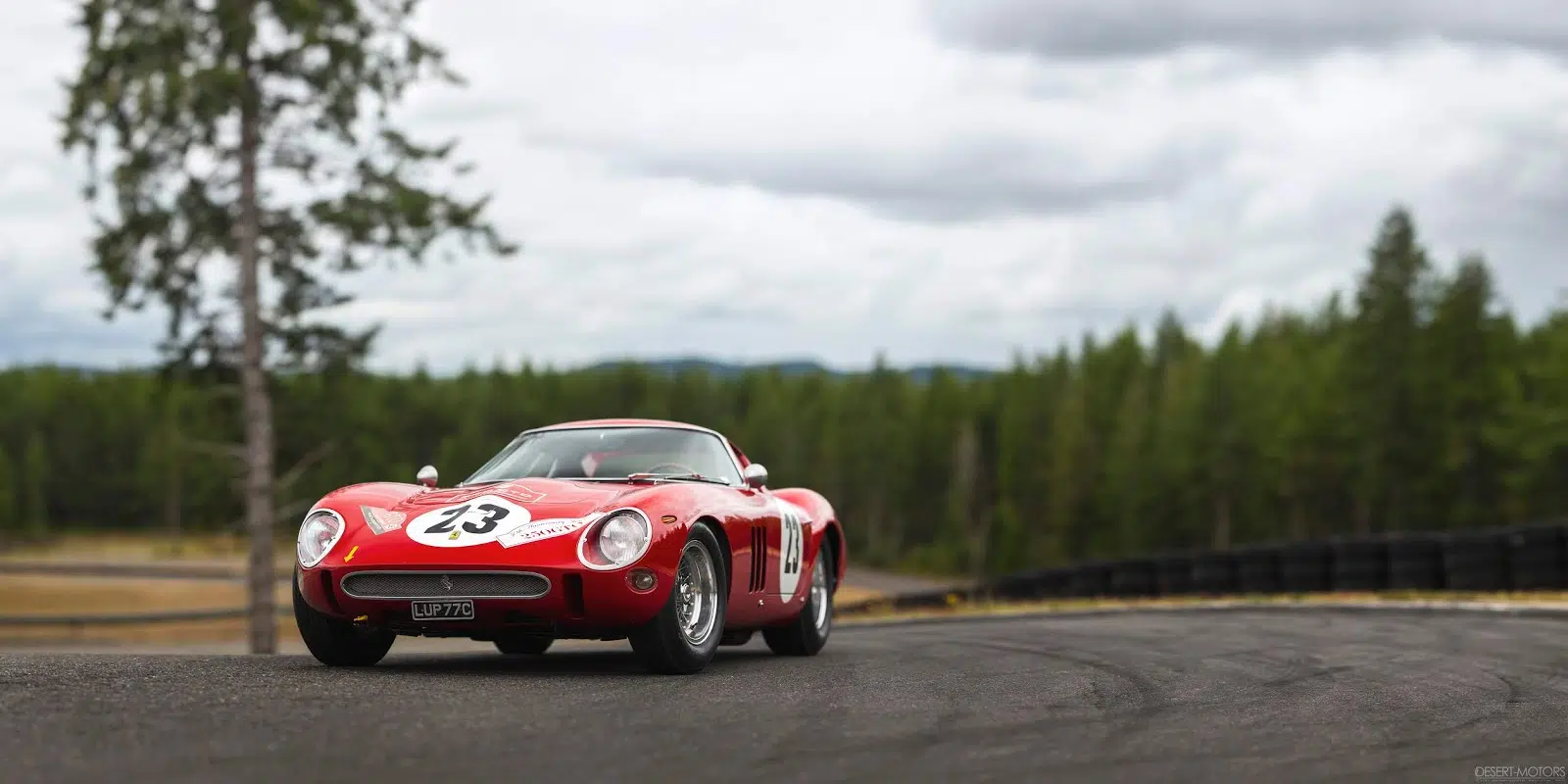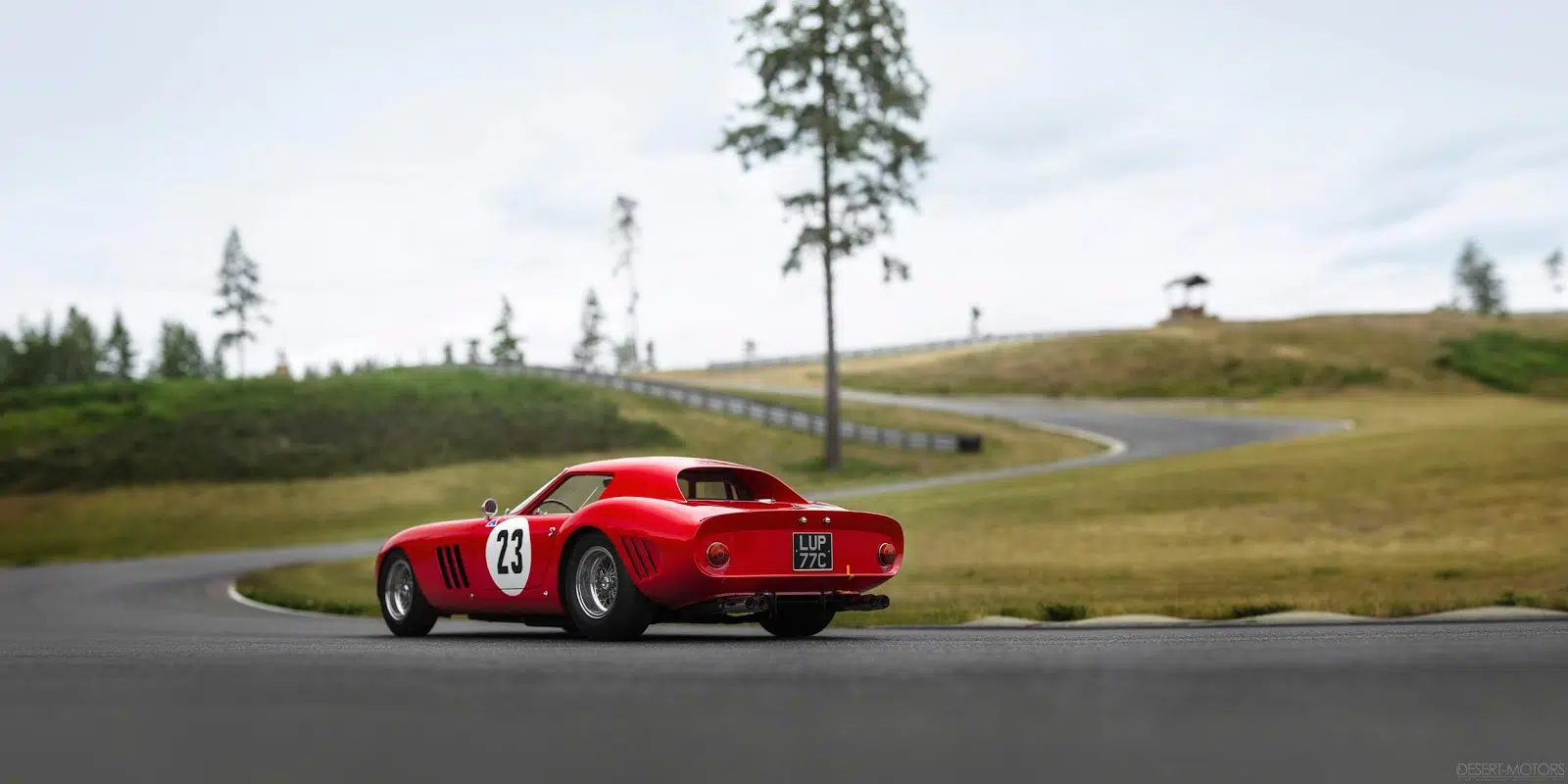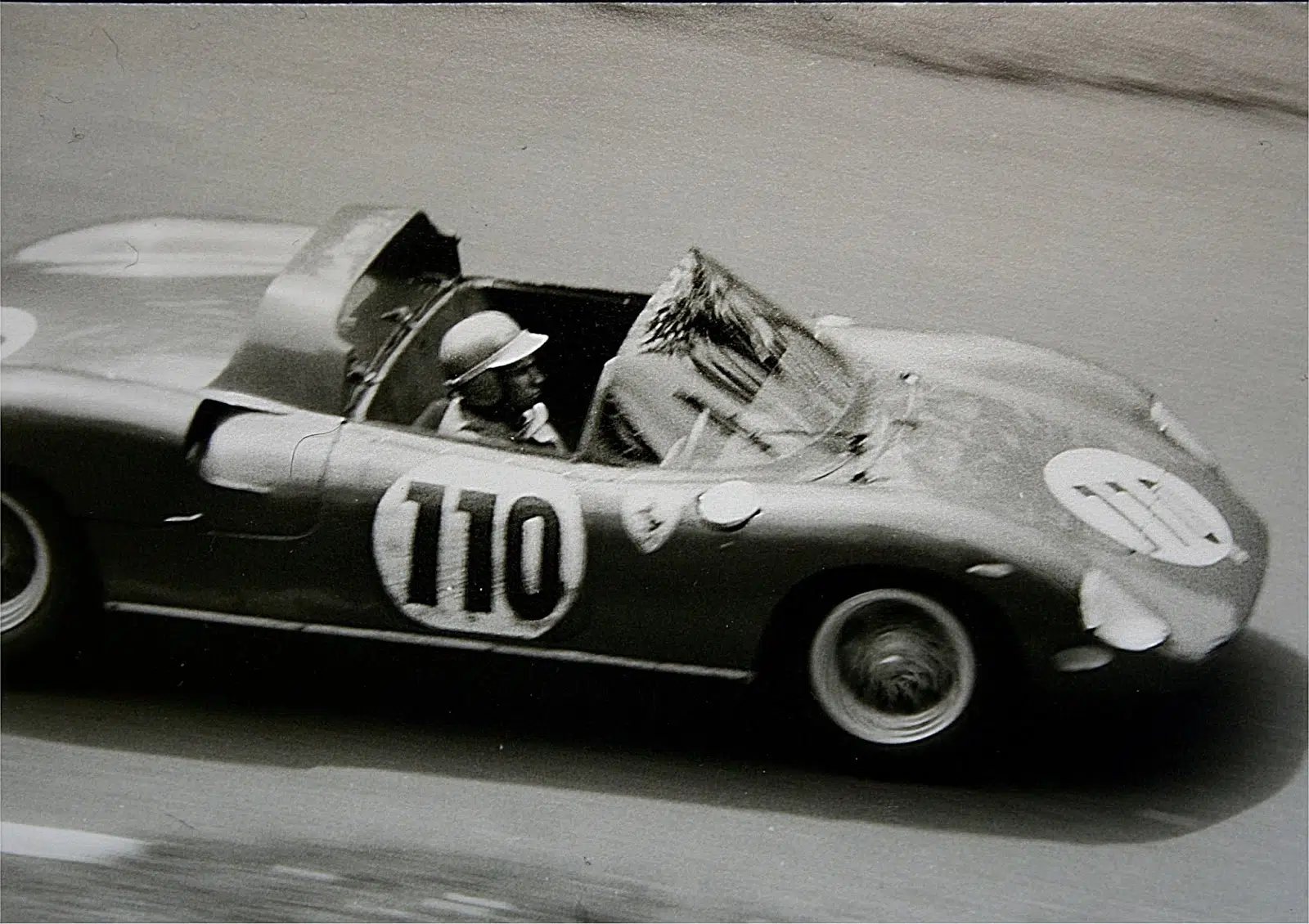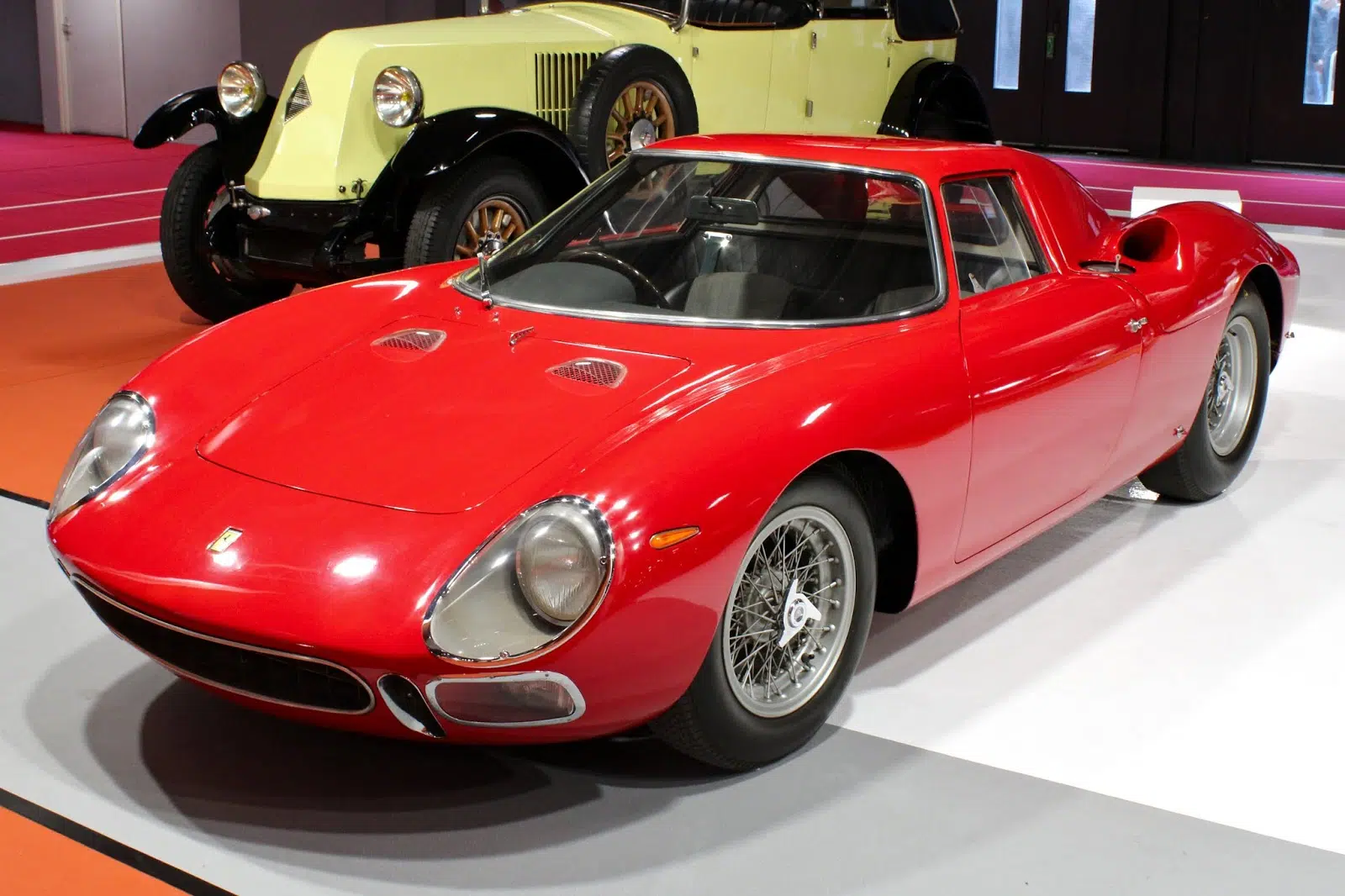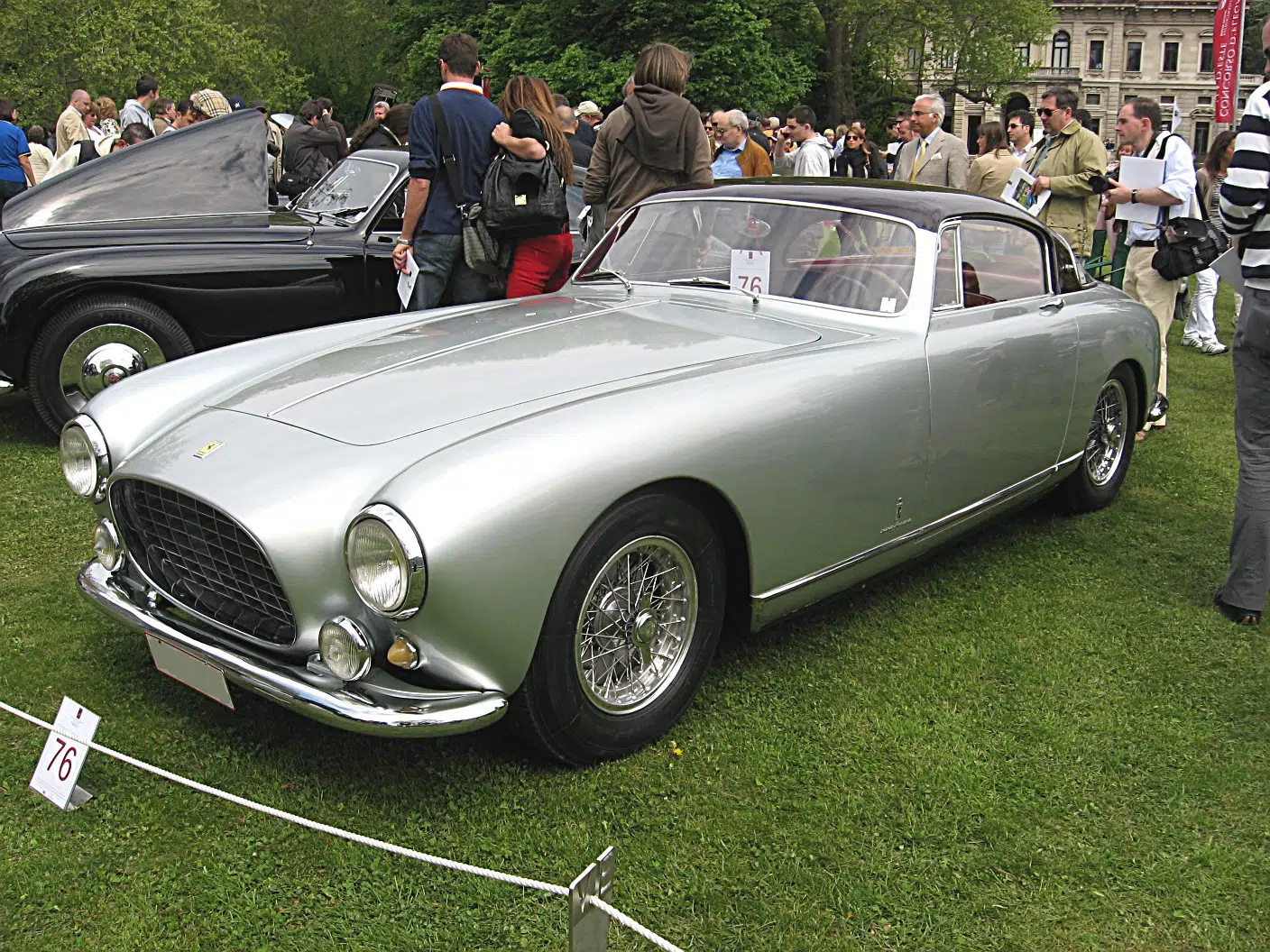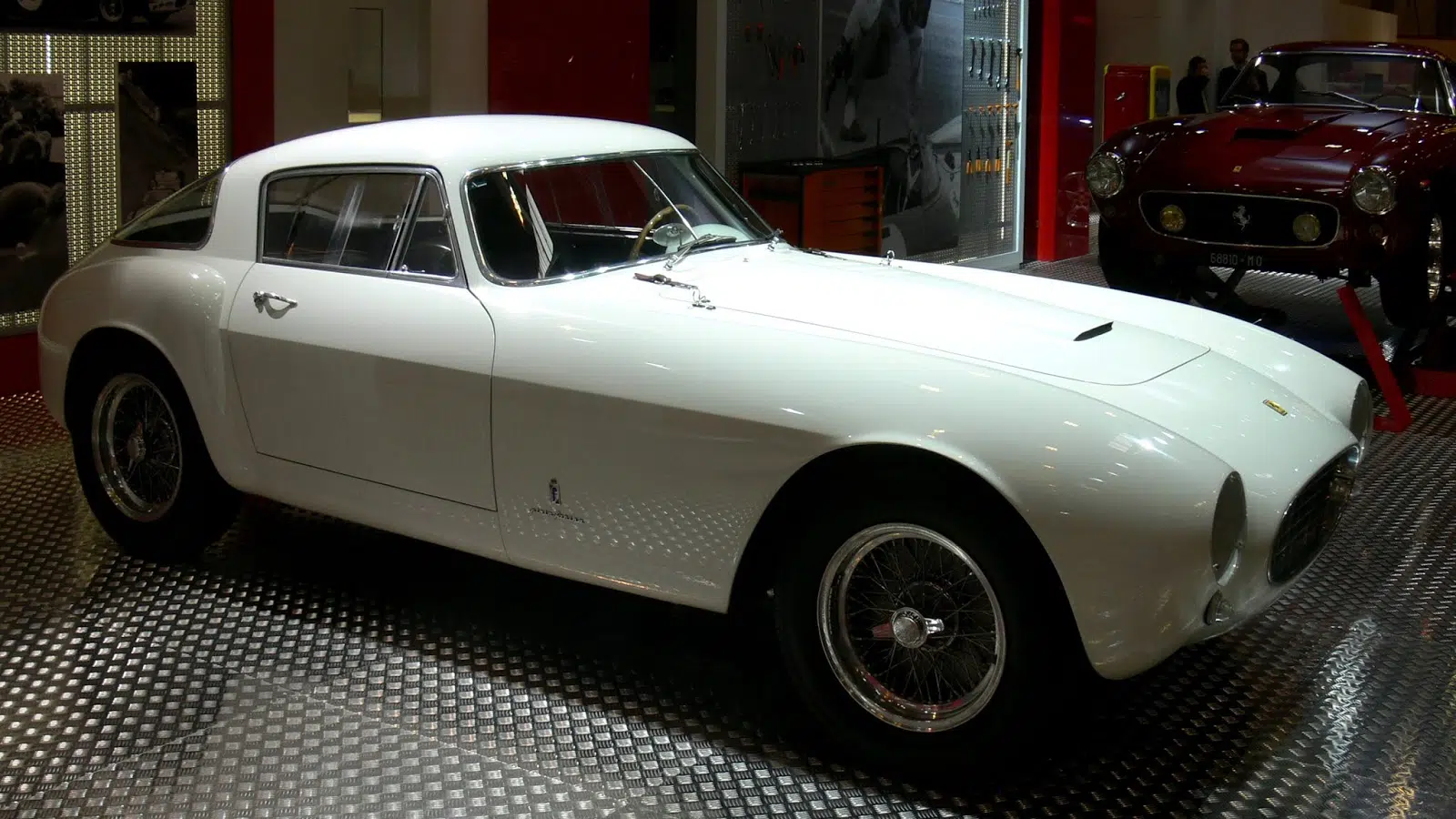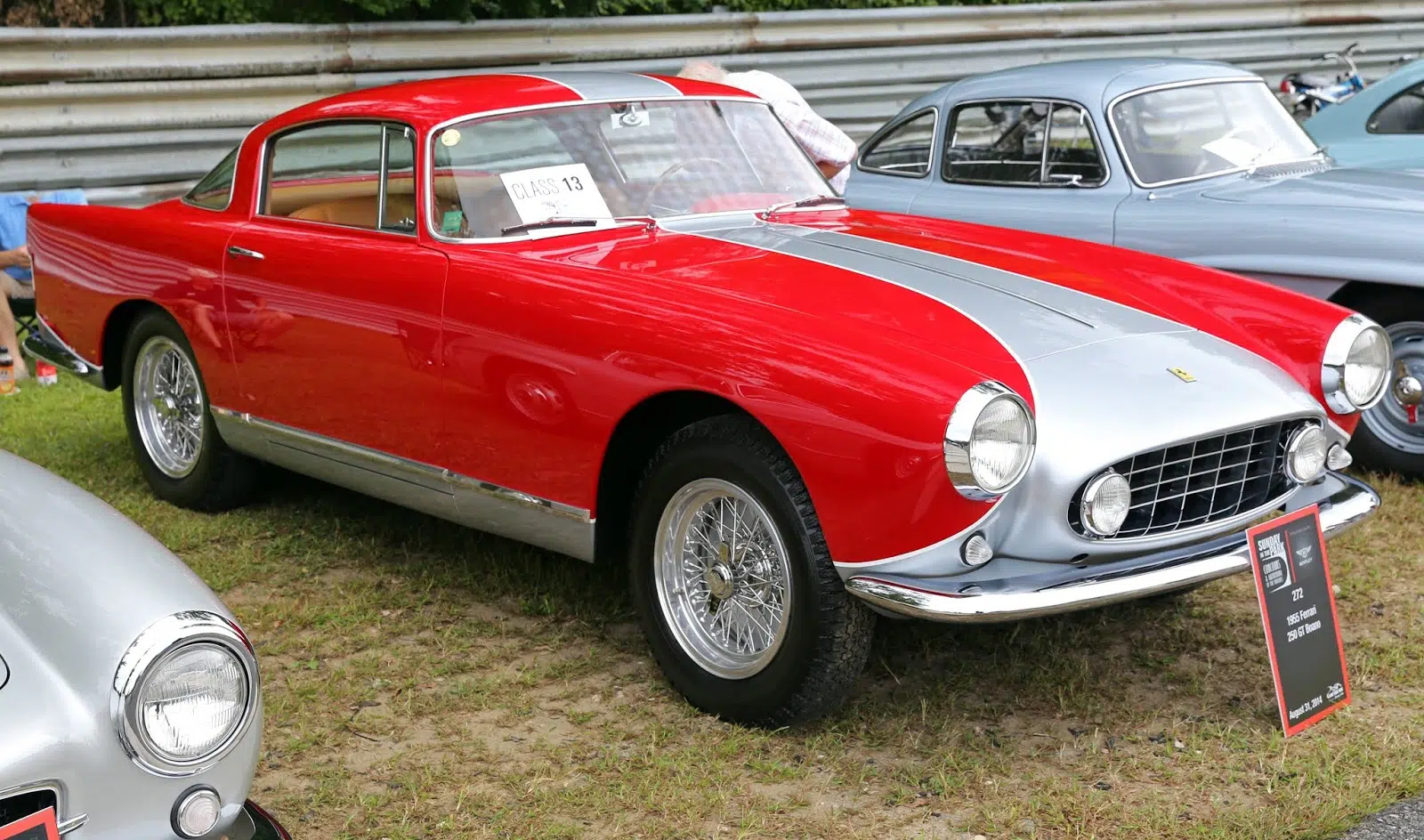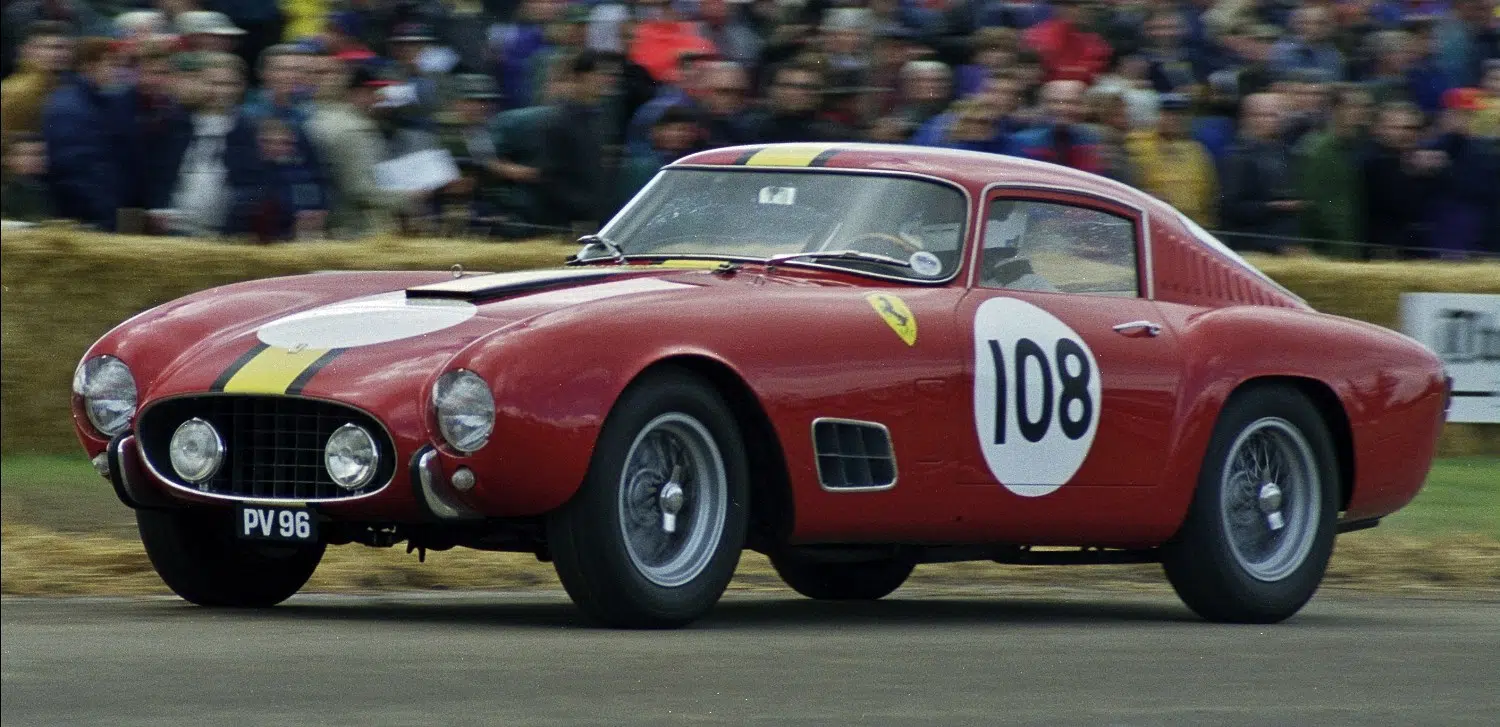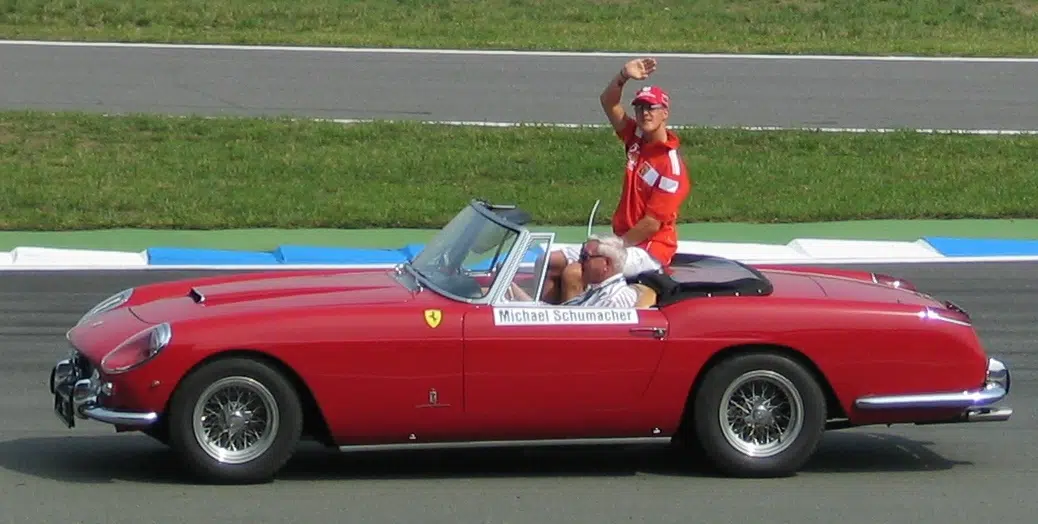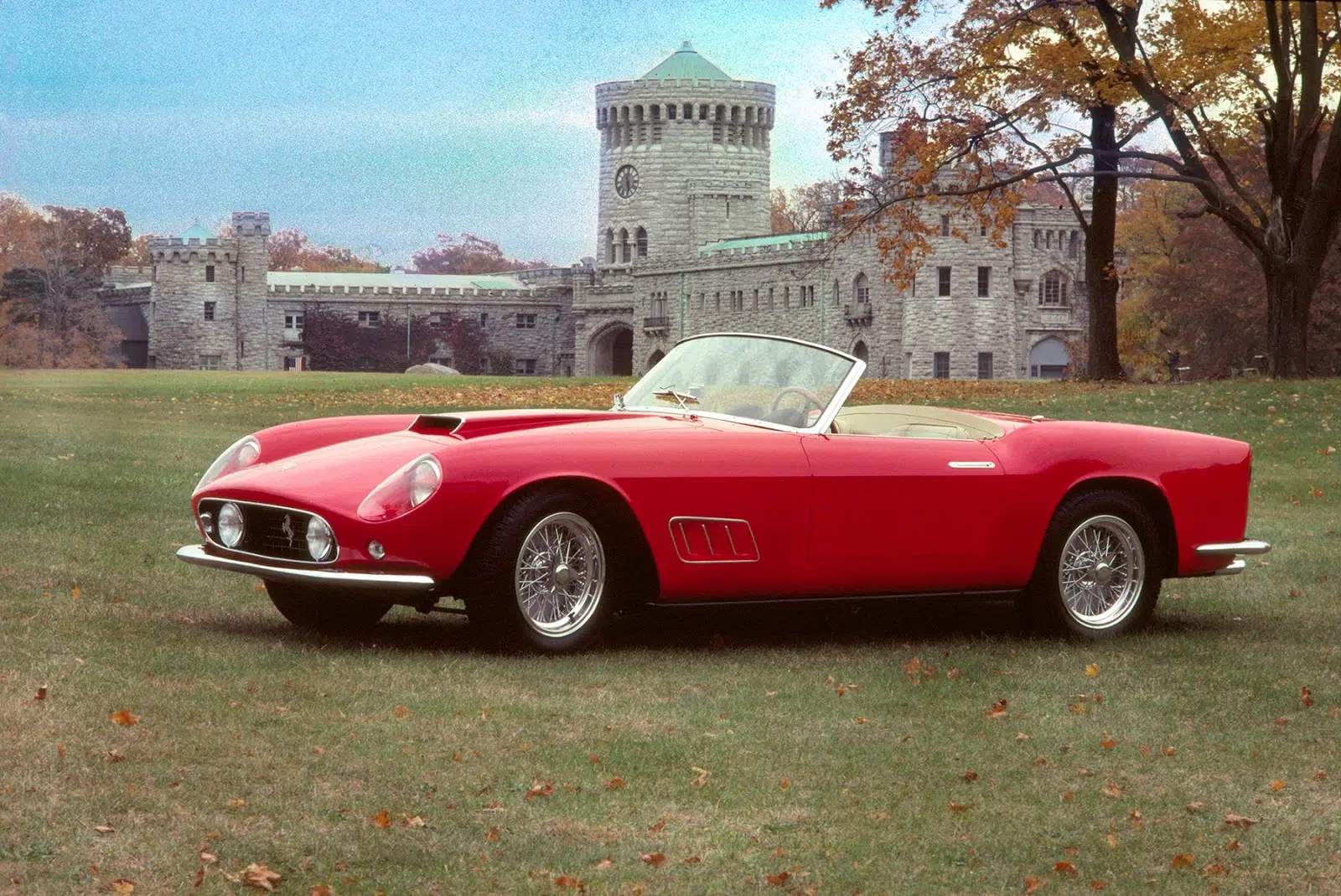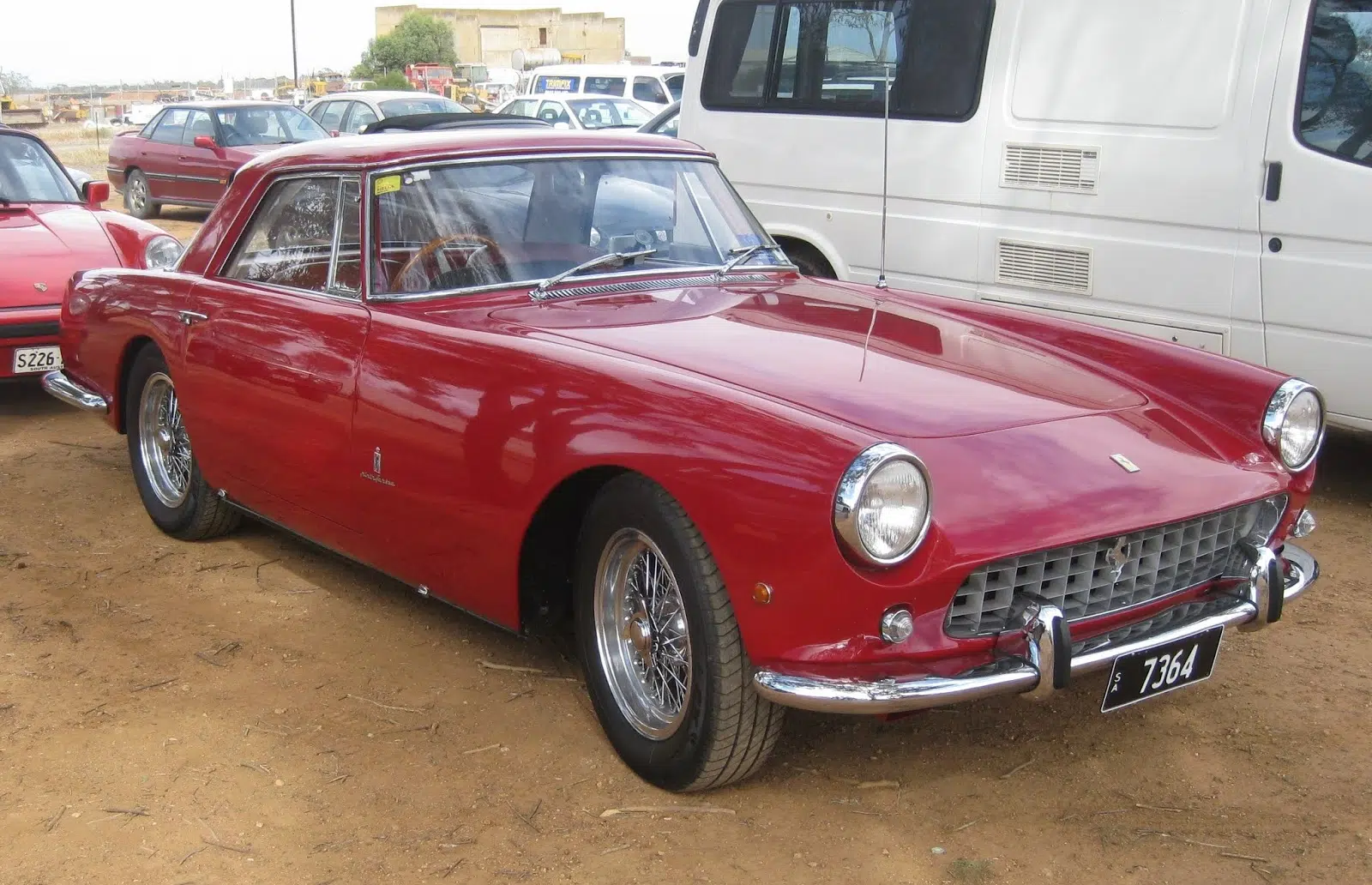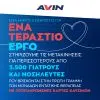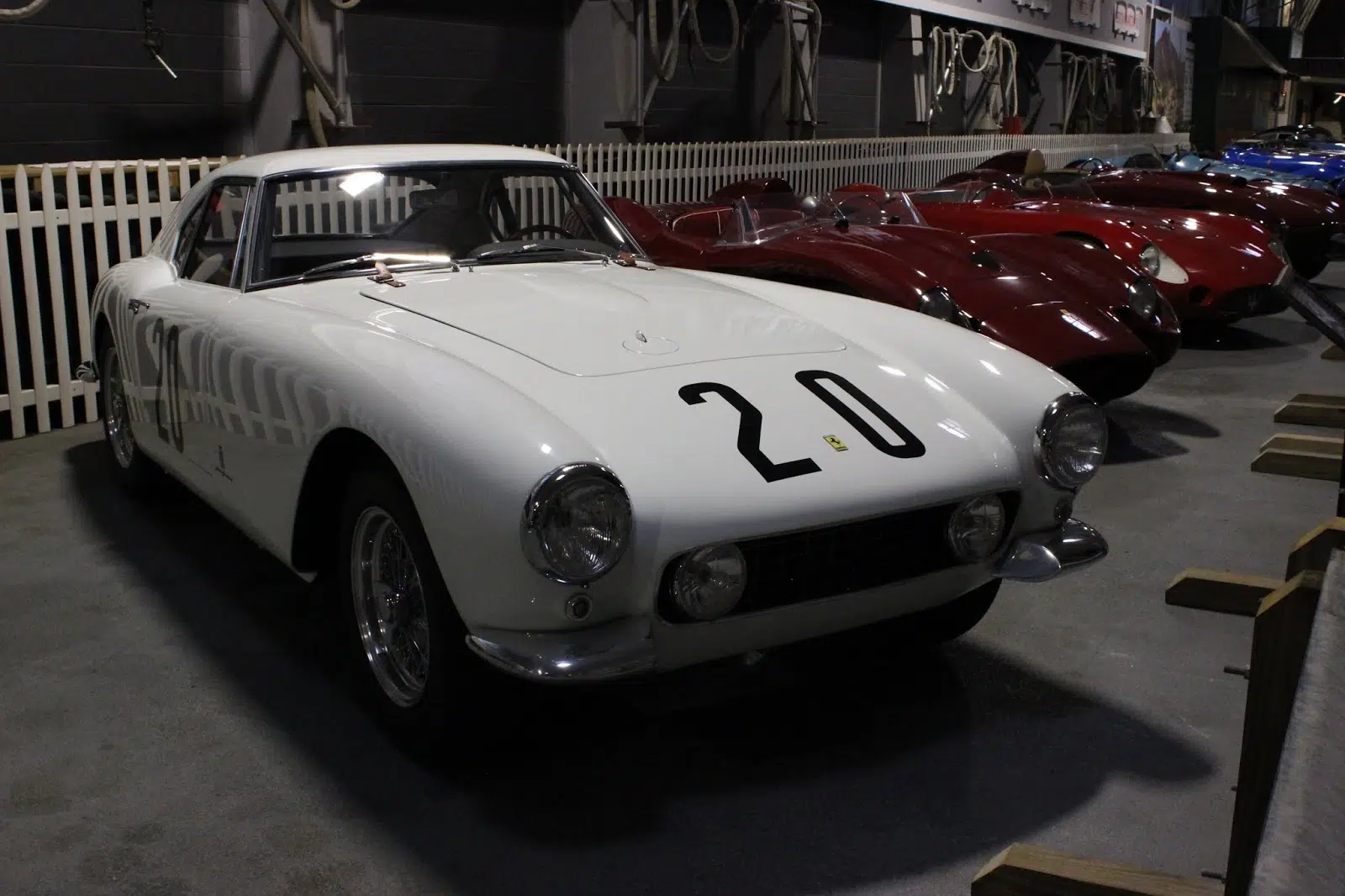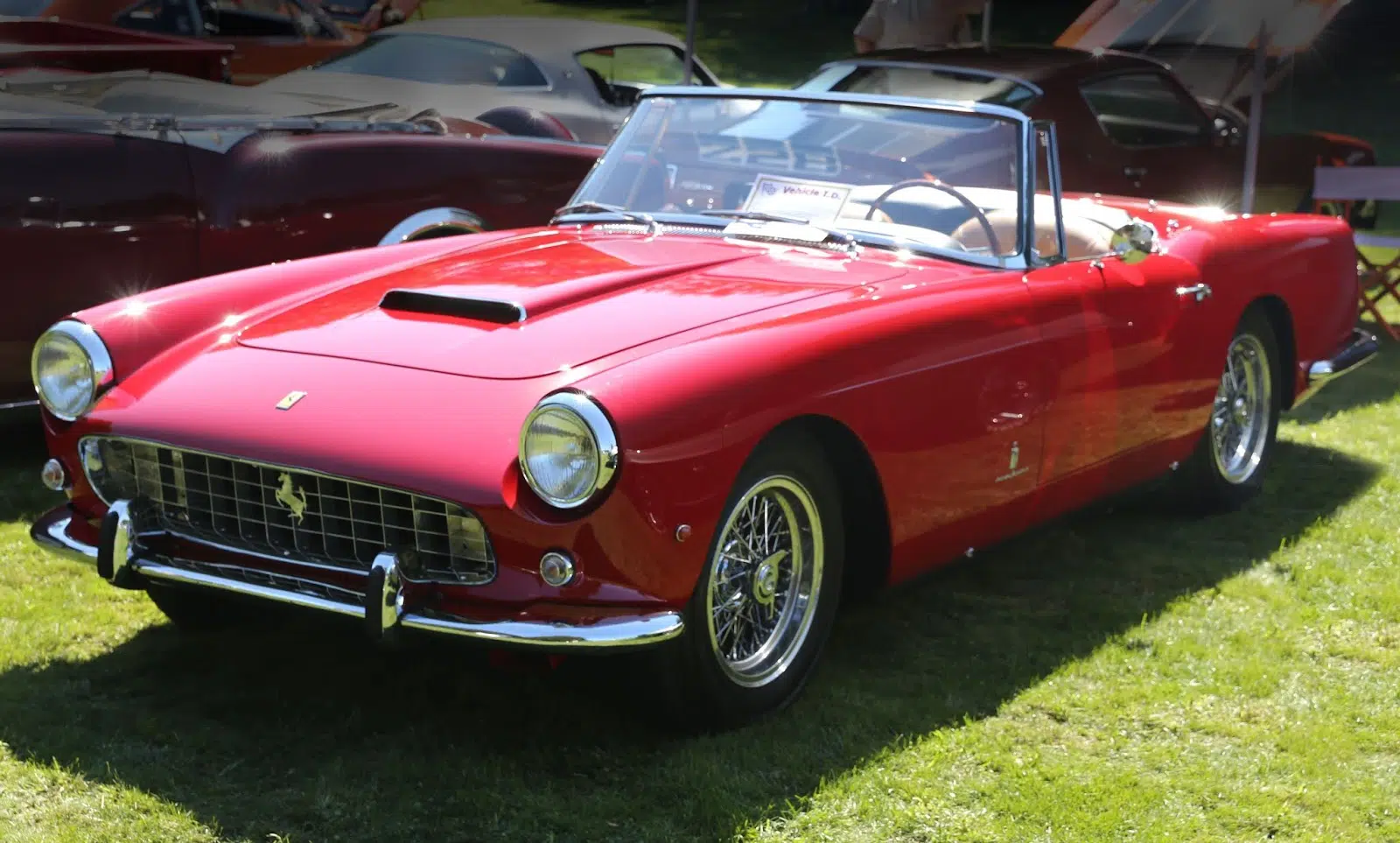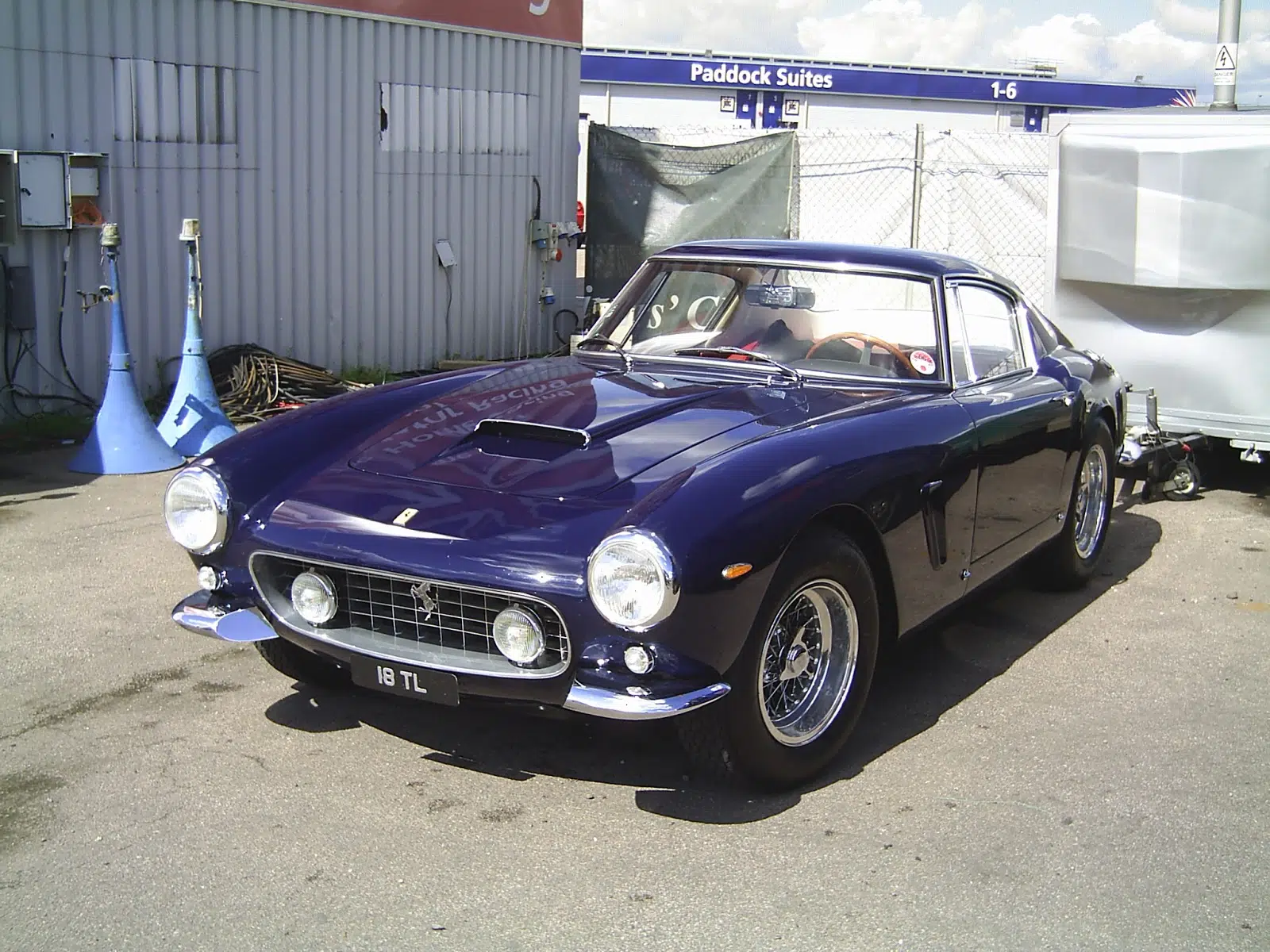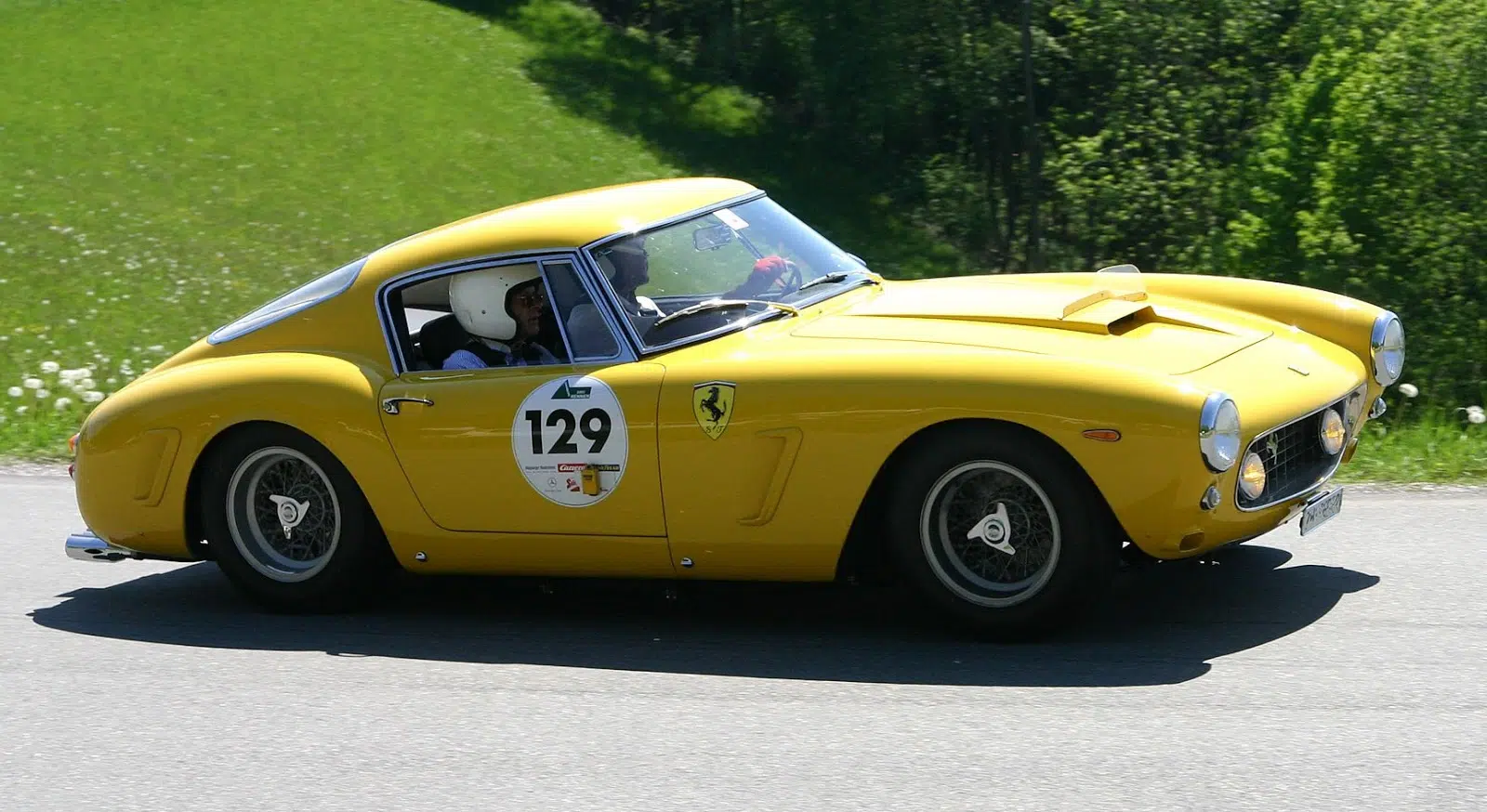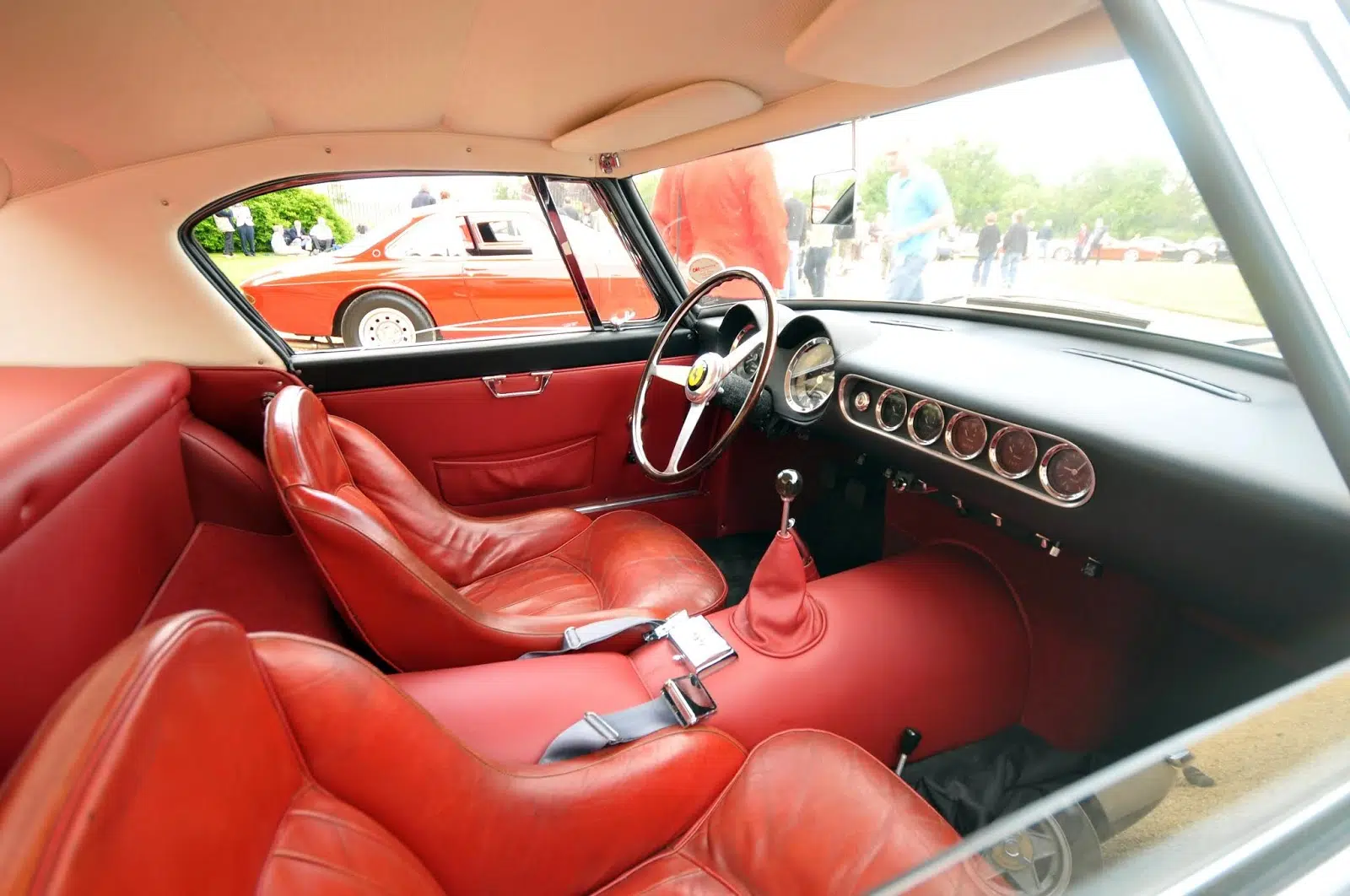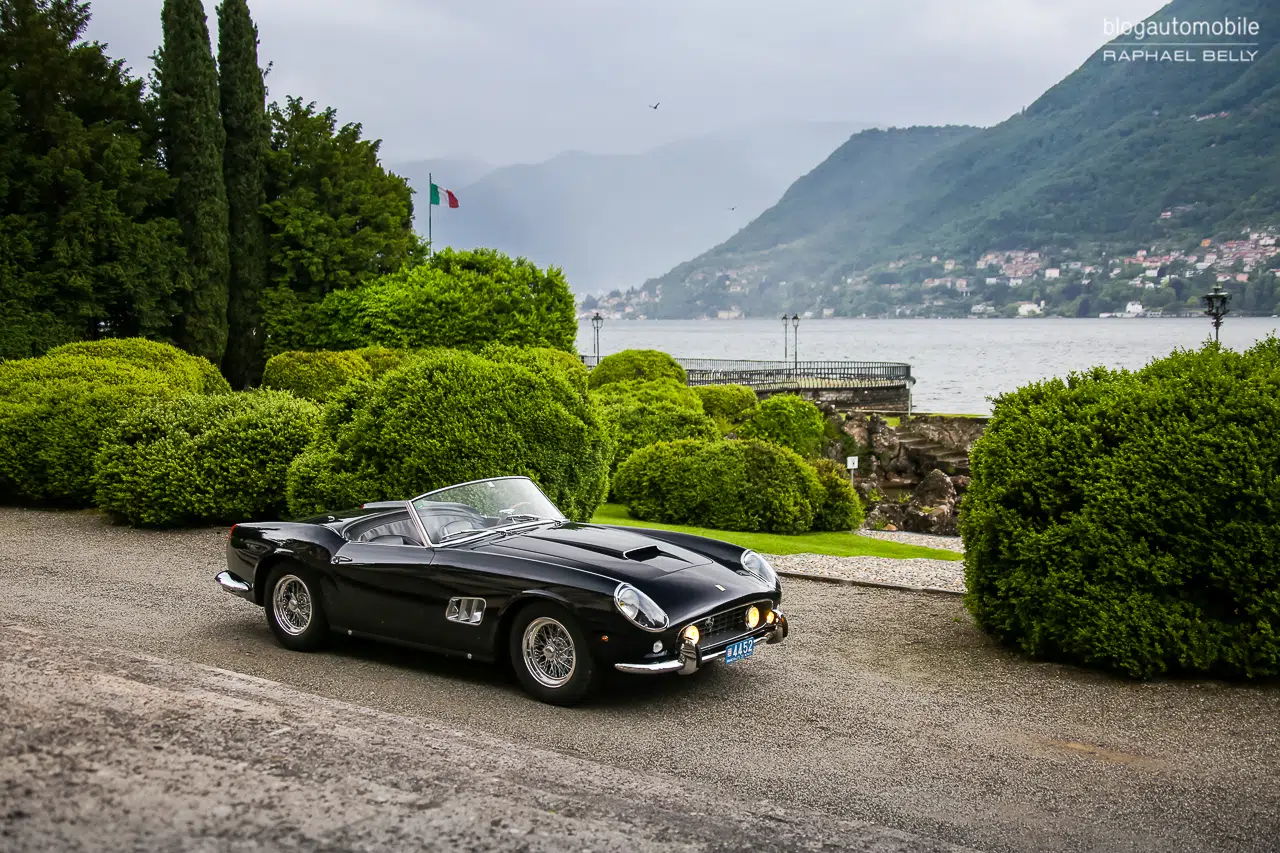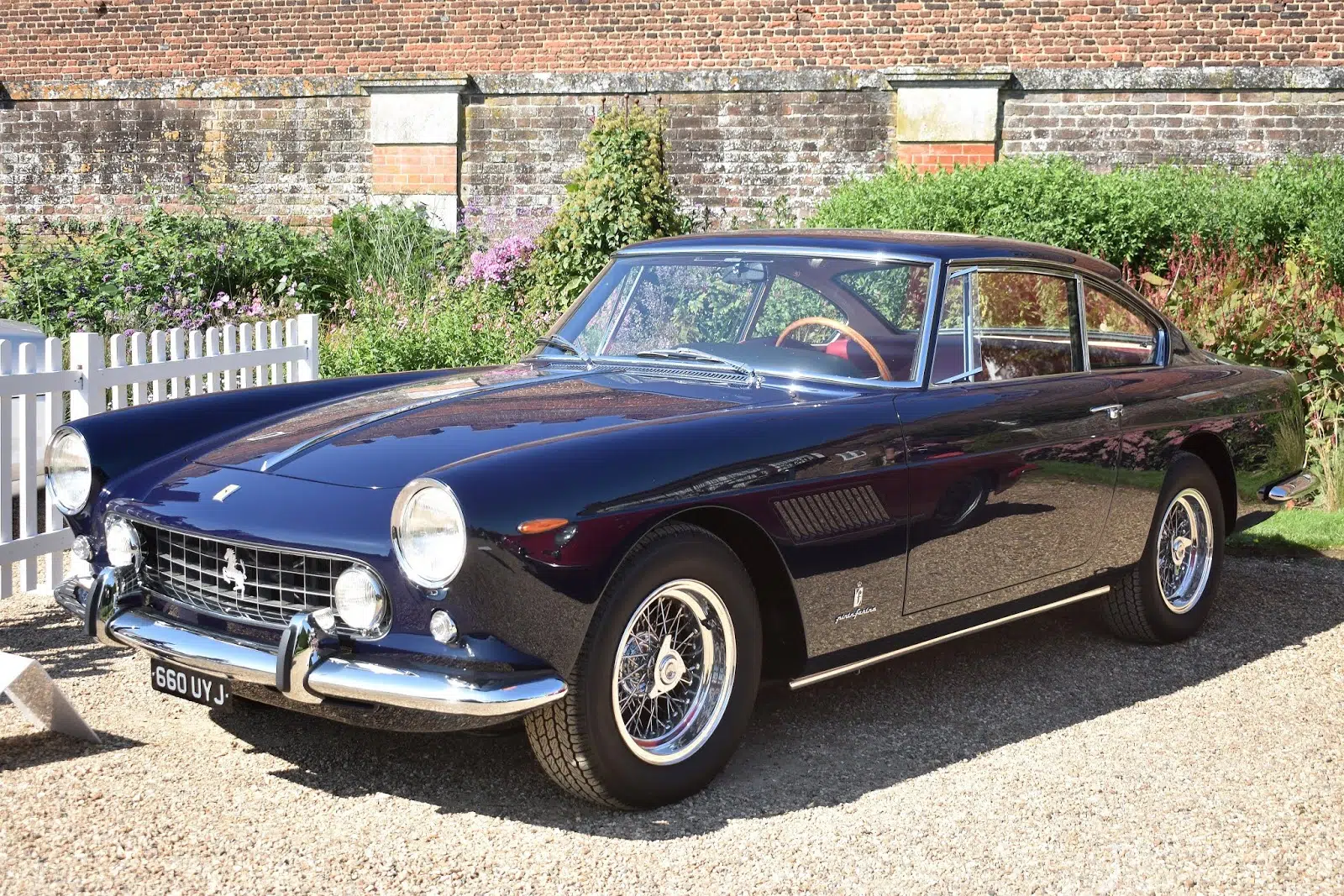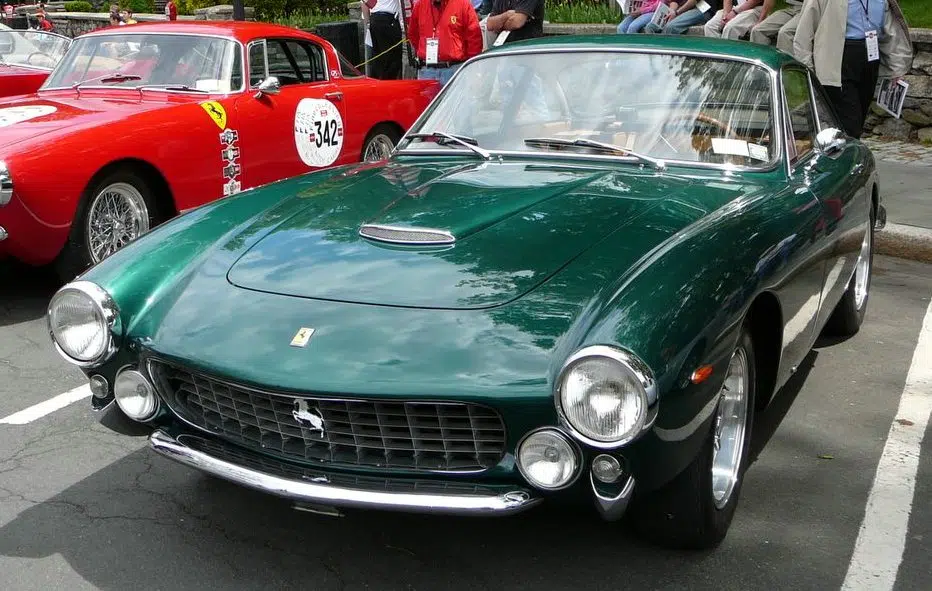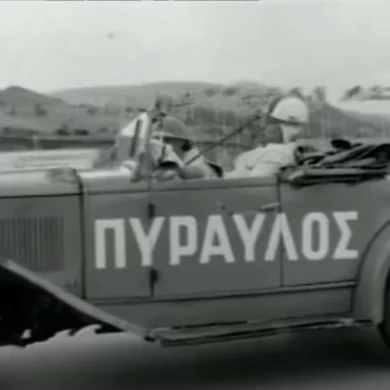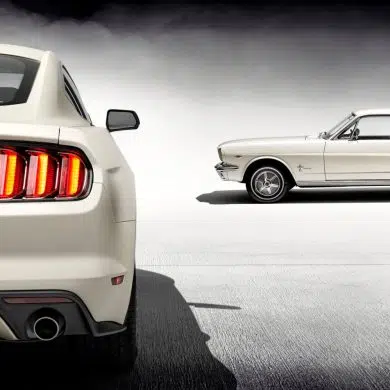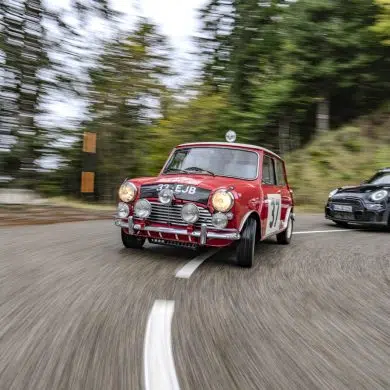There isn't a person who hasn't heard of the 250. Whether it's the California Spider or the 250 GTO. The 250 over the years has become one of the company's most timeless models and has now come to be considered a work of art.
The racing versions of the
As was usual with all Ferraris at the time, the "Colombo" V12 made its track debut 3 years before it was fitted to a road car.
250 S
The first 250 was the 250S Berlinetta prototype that participated in the 1952 Mille Miglia, with Giovanni Bracco and Alfonso Rolfo. The Mercedes Benz racing 300SL of Rudolf Caracciola, Herman Lang and Karl Kling, was faster on the long straights, but the 250S's 230bhp helped it to regain a significant part of the gap in the corners and uphill sections, winning the race. The car later participated in the LeMans race, and also in the Carrera Panamericana.
The 250S, used a tubular chassis, "Tuboscocca", with suspension consisting of double swingarms at the front, while the rear had a live axle, with angled springs. The brakes were drum brakes, typical of the era, and the dry-cart 3-liter V12 was powered by 3 Weber 36DCF carburetors and had a 5-speed manual transmission.
250 MM
Following the success of the 250S at the Mille Miglia, Ferrari presented a more conventional chassis, together with the new engine for the 250, at the 1952 Paris Motor Show.
Pinin Farina then created a new coupé, with a small front grille, short rear end and panoramic rear windscreen, with the car being presented as a 250MM (for Mille Miglia) at the 1953 Geneva Motor Show.
Carrozzeria Vignale, also designed a barchetta version, which also had an innovative design, with the lights and side vents becoming the signature design element of the Ferrari of the 1950s.
The wheelbase of the MM was a little longer than that of the 250S, at 2.4 metres (it was the wheelbase later known as Short Wheel Base & 2.6 metres on the Long Wheel Base), with the coupe being 50 kg heavier than the 850 kg barchetta.
The dry-cart V12 from the 250 gained 240 hp, and the gearbox was reduced to 4 ratios. This engine was replaced by the 4-cylinder 625TF & 735S in 1953.
250 Monza
Copyright : Pont Fire, Flickr
In 1954, the unusual 250 Monza made its appearance. It was a hybrid between the 4-cylinder 750 Monza and the 250 series. The Monza used the 250 engine in the small chassis of the 750 Monza. The first two used the body of the 750 Monza and Pinin Farina's 500 Mondial. Two late cars were built by Carrozzeria Scaglieti.
250 Testa Rossa
The 250 Testa Rossa is one of the most successful race cars in Ferrari's history, with three wins at Le Mans, four at Sebring and two at Buenos Aires.
250 GTO
Copyright : Patrick Ernzen, Flickr
The 250 GTO was built from 1962 to 1964, according to the standards of the FIA homologation for participation in the Group 3 Grand Touring Car category. GTO stands for Gran Turismo Omologato.
When new, the GTO was sold for $18,500 in the US and buyers had to obtain the approval of both Enzo Ferrari himself and the US dealer, Luigi Chinetti
Copyright : Patrick Ernzen, Flickr
36 cars were built in total in 1962 and 1963. In 1964, the Series 2 GTO was introduced, which had a different body. 3 of these cars were built in total, with 4 older Series 1 cars getting the Series 2 body. Total production was 39 cars.
250 P
The 250P was a prototype race car built in 1963, winning the 12 Hours of Sebring, the 1000 kilometres of the Nurburgring and the 24 Hours of Le Mans that year. The 250P, used the 250 Testa Rossa engine, mounted in the centre and rear-wheel drive.
250 LM
The centre-engined 250 Le Mans looked very similar to the racing prototype 250 P, however its original purpose was to become a road-going GT. The Le Mans, also made its appearance in 1963, with Ferrari however, unable to convince the FIA that it would build 100 examples for the road, the minimum number required to get approval to enter the GT Racing class. With this event, Ferrari withdrew from this racing class, leaving the field open for Shelby, who dominated with the Cobra.
Only the first 250 LMs were real 250s, as the later models got a 3.3 litre engine instead of the 3 litre of the 250. The first cars were also converted to 3.300 after some time.
The GT versions of the
250 Europe
The 250 Europa, presented in 1953 in Paris, was the only member of the 250 family, which had a different V12, the 2963cc Lampredi V12, based on the 3.3 litre engine from Formula 1.The Lampredi V12, producing 200 hp at 6300 rpm, was powered by three 36DCF (or DCZ) Weber carburettors, with the same 4-speed manual gearbox as the 250 MM.
With a 2.8-metre silhouette and styling similar to that of the 375 America, the 250 Europa was a true Grand Tourer, with a top speed of 220 kilometres per hour. The 250 Europa and 375 America shared the same chassis, wheelbase and mechanical parts, with the exception of the engine. Coach builders Pinin Farina and Vignale, built just 22 examples, with 2 of them to be converted to 375 America in the future.
250 Europe GT
At the 1954 Paris Motor Show in 1954, Ferrari presents its first car equipped with the new Colombo V12, the 250 Europa GT, the company's first model to be called Gran Turismo.
The 250 GT had several versions, with a common base, made to order by each customer, with Pinin Farina taking over the creation of all of them before the 250 production line became more "mass-produced".
The 250 Europa, with the newly updated Colombo V12, now produced 220 hp and was mounted on a 2.6 m wheelbase.
250 GT Coupe Boano and Ellena
This particular 250 was built and presented in 1956, at the Geneva Motor Show, by Pinin Farina, under the name 250 GT Boano, as a prototype and as a source of design inspiration for potential customers of the 250 GT Europa. However, demand for this model was so high that it went into production as normal.
Unable to cope with the production needs, Pinin Farina asked Mario Boano, until then an employee of Ghia, to take over their production. When Fiat later hired Boano, he in turn entrusted his son-in-law, Enzio Ellena, to continue production. Ellena, along with his partner, Luciano Pollo, continued manufacturing.
Carrozzeria Boano built 74 copies, while Carrozzeria Ellena built another 50 coupes. All of the 250 in question were coupes, with the exception of one and only one, the one on the Ferrari stand at the 1956 New York Auto Show, which Enzo sold to American collector Bob Lee for $9,500, well below cost, with Lee owning it to this day, making it the oldest Ferrari to date in the possession of its first owner.
250 GT Pinin Farina Coupe Speciale
This special edition 250 GT, built in just 4 examples, was built on the 513 chassis, with a design inspired by the Series 1 410 Superamerica and was powered by the 3 litre Type 128 V12 engine.
250 GT Berlinetta "Tour De France"
The original 250 GT Berlinetta, nicknamed the "Long Wheelbase Berlinetta", was named "Tour De France" for its participation in the 10-day car race of the same name. Total production was 77, with a number of them sold as GT class racers between 1956 and 1959. The TDFs (as they came to be known) were built by Carrozzeria Scaglietti, based on Pinin Farina's designs. Their output was initially 240 hp, rising to 260 hp in the process.
At the Geneva Motor Show in 1956, Scaglietti presented his own design version of the 250 GT Berlinetta, which became known as the limited production, "no-louvre" 250 GT Berlinetta. The first customer car was built in May 1956, with responsibility for the production of this limited edition being exclusively in the hands of Carrozzeria Scagletti in Modena. In total, 14 "no-louvre" and 9 "14 louvre" Series 1 and Series 2 were built.
In total, there were 4 Series of 250 GT Berlinetta, with Series 3 being introduced in mid-1957, with 3 louvres and headlight covers (18 were built in total), while Series 4, which followed, retained the headlight covers but had only 1 louvre (36 were built in total).
A 250 GT Berlinetta, won the Tour De France Automobile race, 3 consecutive years (1956, 1957, 1958), with Ferrari's winning streak continuing with the "Interim" and SWB Berlinettas.
250 GT Convertible Pinin Farina Series 1
The original 250 GT Cabriolet Pinin Farina Series 1 had been shown at the Geneva Motor Show in 1957, and used the 2.6 metre wheelbase of the coupé.
In total, 36 cars were built until the introduction of the Series 2 in 1959 in Paris, of which 200 cars were built and had more in common with the Berlinetta version.
250 GT California Spyder LWB
Σχεδιασμένη για την Αμερικανική αγορά, η California Spyder LWB, που παρουσιάστηκε το 1957, ήταν η εκδοχή της open-top 250 GT, κατά τον Scaglietti. Στη California Spyder LWB έγινε χρήση αλουμινίου αντί του κανονικού κράματος μετάλλου, στο καπό, τις πόρτες και το πορτμπαγκαζ.
Χρησιμοποιήθηκε το μεταξόνιο των 2.6 μέτρων και ο Colombo V12 που τοποθετήθηκε, ήταν ο ίδιος με αυτόν της αγωνιστικής 250 Tour De France.
Συνολικά, κατασκευάστηκαν 50 Long Wheel Base Spyders, μέχρι την αντικατάσταση τους απο τις Short Wheel Base το 1960.
250 GT Coupe Pinin Farina
Υπο την ανάγκη για ένα μοντέλο σταθερής και πιο μαζίκής παραγωγής, προκειμένου να σταθεροποίηση τα οικονομικά της εταιρείας, ο Enzo Ferrari ζήτησε απο τον Pinin Farina, να σχεδιάει μία απλή και κλασσική εκδοχή της 250 GT coupe.
Μετά την 250 GT Coupe Boano/Ellena, το εργοστάσιο του Pinin Farina στο Grugliasco επεκτάθηκε για να ανταπεξέλθει στις ανάγκες παραγωγής της νέας 250.
Με την παρουσίαση της το 1958 στο Σαλόνι Αυτοκινήτου του Μιλάνου, κατασκευάστηκαν συνολικά 335 σχεδόν όμοια μεταξύ τους αυτοκίνητα, μέχρι την απόσυρση της απο τη παραγωγή το 1960. Εν αντιθέση με τις υπόλοιπες 250 εως τότε, η συγκεκριμένη εκδοχή, είχε τη στενή-φαρδιά εμπρός γρυλιά με τα φώτα να ξεπροβάλουν πάνω στα εμπρός φτερά και το πίσω μέρος να διαθέτει ένα ενιαίο πανοραμικό παρμπριζ.
250 GT Berlinetta “Interim”
To 1959, κατασκευάστηκαν 7 250 GT “Interim” LWB Berlinettas. Χρησιμοποιούσαν το παλιό Long Wheel Base σασί με το νέο σώμα του Pinin Farina, των επερχόμενων Short Wheel Base Berlinettas. Οι Interim ήταν κατασκευασμένες εξ’ ολοκλήρου απο αλουμίνιο και έφεραν ένα επιπλέον παράθυρο στη 3η κολώνα , το οποίο απουσίαζε απο τις μετέπειτα “Passo Corto” Berlinettas.
Τα 7 Interim αυτοκίνητα είναι τα 1377GT, 1461GT, 1465GT, 1509GT, 1519GT, 1521GT και 1523GT.
Η Interim Berlinetta, κέρδισε τον αγώνα Tour De France Automobile του 1959, συνεχίζοντας το σερί νικών της Ferrari
250 GT Cabriolet Pinin Farina Series 2
Η Series 2 Cabriolet, που παρουσιάστηκε το 1959 στο Σαλόνι Αυτοκινήτου του Παρισιού, ακολουθούσε την ίδια λογική με την Coupe. Δηλαδή, ένα σχεδιαστικά απλοποιημένο αυτοκίνητο, με δυνατότητα παραγωγής μεγαλύτερου αριθμού οχημάτων σε λιγότερο χρόνο. Κατασκευάστηκαν κατά προσέγγιση, 212 αυτοκίνητα.
250 GT Berlinetta SWB
Ένα απο τα πλέον γνωστά GT racer της εποχής της, ήταν η 250 GT Berlinetta SWB. Χρησιμποιούσε το κοντύτερο μεταξόνιο, των 2.4 μέτρων, που της έδινε καλύτερη οδηγική συμπεριφορά, και κάποιες κατασκευάστηκαν απο αλουμίνιο, όσο και κάποιοες εξ’ ολοκλήρου απο μέταλλο, στις “Lusso”, έκδοση δρόμου, όσο και στις αγωνιστικές εκδοχές της. Η απόδοση στις πρώτες, ήταν 240 ίπποι, οι οποίοι στις μετέπειτα έγιναν 280.
Την εξέλιξη της 250 GT Berlinetta SWB, ανέλαβαν οι Giotto Bizzarrini, Carlo Chiti και Mauro Forghieri, η ίδια ομάδα που αργότερα εξέλιξε την μυθική 250 GTO. Ήταν η πρώτη GT Ferrari με σύστημα πέδησης δίσκου αντί ταμπούρου. Τα χαμηλό της βάρος, η μεγάλη ιπποδύναμη της καθώς και η κατάλληλα ρυθμισμένη ανάρτηση της, την έκαναν ιδιαίτερα ανταγωνιστική στο χώρο των αγώνων.
Μετά τη παρουσίαση της στο Σαλόνι Αυτοκινήτου του Παρισιού το 1959, μπήκε αμέσως στο χώρο των αγώνων, με μεγάλη επιτυχία. Η Ferrari κέρδισε το πρωτάθλημα κατασκευαστών στη κατηγορία GT το 1961, καθώς και το Tour De France το 1960,1961 και 1962, ανοίγωντας το δρόμο για τη κυριαρχία της 250 GTO που τη διαδέχτηκε.
250 GT California Spyder SWB
Copyright : Raphael Belly, Flickr
To 1959, η Ferrari ανανέωσε την 250 GT Berlinetta, μικραίνοντας το μεταξόνιο της απο 2.6 σε 2.4 μέτρα, και το 1960 έκανε το ίδιο με την California Spyder. Αυτό βελτίωσε αισθητά την οδηγική της συμπεριφορά, σε συνδυασμό με την νεότερη και ισχυρότερη εκδοχή του 3λιτρου V12, ο οποίος απέδιδε 280 ίππους. Συνολικά, κατασκευάστηκαν 55 αντίτυπα.
250 GT/E
Copyright : Zack’s Motor Photos, Flickr
Χρησιμοποιόντας ως βάση την 250 GT Long Wheel Base, η Ferrari δημιούργησε το πρώτο 2+2 large-production μοντέλο της, με το όνομα 250 GT/E.
Ο κινητήρας ήταν τοποθετημένος πιο μπροστά, αφήνωντας περισσότερο χώρο στο εσωτερικό. Οι πίσω θέσεις είχαν επαρκή χώρο για παιδιά, αλλά ήταν κάπως μικρές για ενήλικες.
Με τιμή 11.500 δολάρια και μεγάλο αριθμό αντιτύπων, η 250 GT/E ευθύνεται σε μεγάλο βαθμό για την οικονομική ευημερία της εταιρείας στις αρχές της δεκαετίας του ’60.
250 GT Berlinetta Lusso
Ο Pinin Farina, στο Σαλόνι Αυτοκινήτου του Παρισιού, το 1962, παρουσίασε το ανανεωμένο σχέδιο για την 250 GT, την 250 GT Lusso, ή αλλιώς GTL. Το αυτοκίνητο είχε πιο “ρευστές” γραμμές και fastback σχεδιασμό,χαρακτηριστικό σχεδιαστικό στοιχείο των αυτοκινήτων εκείνης της εποχής.
Η Lusso είχε τον ίδιο V12, τον Tipo 168, με την 250 GTO, ο οποίος απέδιδε 240 ίππους. Η Lusso κατασκευαζόταν μέχρι και το 1964 απο τον Scaglietti με ελάχιστες διαφοροποιήσεις.
All in all
Η 250 έχει μία δική της ξεχωριστή μαγία. Μία μαγία που οι υπόλοιπες, κατ’ εμέ, παλιότερες Ferrari δεν είχαν, όπως η 330 για παράδειγμα.
Είναι ένα κινούμενο έργο τέχνης, είναι μία επένδυση που έχει μία σχετική χρηστικότητα και φυσικά, σε ταξιδεύει με ένα δικό της μοναδικό τρόπο.
Ιδανικά, θα ήθελα μία απο τις Spyder, στην Ακτή Amalfi ή στη Κυανή Ακτή, ίσως και στη Pacific Coast Highway. Καλά, σας αφήνω να ταξιδέψετε και εσείς όπου θέλετε…


